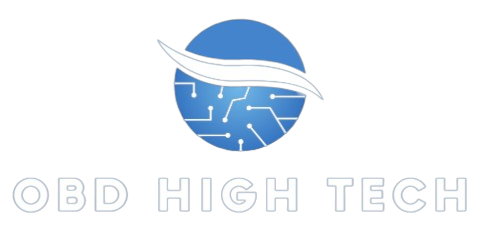The post-apocalyptic genre has fascinated readers and filmmakers alike for decades, often offering chilling insights into the human condition after a global catastrophe. One of the most enduring works in this genre is A Canticle for Leibowitz by Walter M. Miller Jr. First published in 1960, this novel remains a cornerstone of speculative fiction, offering readers a thoughtful meditation on the cyclical nature of history, the role of religion, and the potential dangers of technological advancement.
Set in a future where humanity has nearly destroyed itself through nuclear war, A Canticle for Leibowitz explores themes of knowledge, faith, and the inevitability of human error. In this article, we will dive into the world of A Canticle for Leibowitz, examining its key themes, characters, and relevance to modern readers, while also addressing its lasting impact on literature.
TRENDING
Unlock Wealth With Money 6X REIT Holdings: Expert Tips
Plot Summary: The End And The Beginning
At the heart of A Canticle for Leibowitz is a monastery in the desert of what was once the southwestern United States. Centuries after a devastating nuclear war known as the “Flame Deluge” has wiped out most of human civilization, the monks of the Order of St. Leibowitz have dedicated themselves to preserving and protecting the remnants of knowledge from the pre-apocalyptic world. The novel unfolds over three distinct time periods, each separated by hundreds of years, showing how humanity’s relationship with technology and knowledge evolves in the aftermath of the apocalypse.
The First Section: “Fiat Homo” (Let There Be Man)
The first section of the novel takes place in the 26th century, long after the fall of civilization. Brother Francis Gerard of the Order of St. Leibowitz discovers the ruins of an ancient shelter that belonged to a scientist named Isaac Leibowitz. While the world around him has largely reverted to a medieval state, the monks’ mission is to preserve knowledge, hoping that humanity will one day rise again from the ashes.
Brother Francis’ discovery of Leibowitz’s personal documents sets off a chain of events that leads to the eventual recognition of the Order’s work. The monks are faced with the challenge of preserving knowledge that the world no longer values, and their efforts are further complicated by the emerging threat of war.
The Second Section: “Fiat Lux” (Let There Be Light)
In the second section, we move ahead several centuries to a time when the world is on the brink of another conflict. The “Simplification,” which had occurred after the nuclear disaster, had led to a widespread anti-intellectual movement. Knowledge was suppressed, and many books were destroyed or lost. As a result, the monks’ task of preserving knowledge becomes even more important.
The central character in this section is the scholarly monk, Brother Blue, who grapples with the possibility of repeating the mistakes of the past. The threat of war looms large, and the monks must decide whether to intervene or remain passive in the face of human folly.
The Third Section: “Fiat Voluntas Tua” (Let Your Will Be Done)
In the final section, the story shifts to the 32nd century. The human race has once again achieved a level of technological advancement, but it is unclear whether humanity has learned anything from its past mistakes. The tensions between the forces of science, religion, and politics come to a head, as the monks’ preservation of knowledge is challenged by the potential for another nuclear war.
The novel’s conclusion forces readers to question whether humanity can ever break free from the cyclical nature of its self-destructive tendencies. Will humanity once again destroy itself, or is there hope for a future of peace and wisdom?
Key Themes In A Canticle For Leibowitz
The Cyclical Nature of History
One of the central themes in A Canticle for Leibowitz is the idea that history is doomed to repeat itself. The novel’s structure, with its division into three distinct time periods, mirrors the rise and fall of civilizations throughout history. Each cycle of human development is marked by a period of advancement, followed by a catastrophic event that sets the stage for a new beginning.
Miller’s exploration of this cyclical nature serves as a warning to readers about the fragility of civilization. Despite humanity’s ability to build and innovate, the novel suggests that our propensity for self-destruction is an equally powerful force.
Knowledge and the Responsibility of Preservation
The monks of the Order of St. Leibowitz dedicate their lives to preserving the knowledge of the pre-apocalyptic world, and this preservation becomes a key motif throughout the novel. However, Miller questions whether humanity can be trusted with knowledge, particularly when the consequences of misusing it can be catastrophic. This theme is especially relevant in a world where scientific advancements, such as nuclear weapons, have the potential to destroy entire civilizations.
Miller raises the question of whether it is better to preserve knowledge and hope for a future that can use it wisely, or whether it is too dangerous to allow such knowledge to survive. This moral dilemma is central to the story and challenges readers to think about their own relationship with knowledge and power.
Faith and the Role of Religion
Religion plays a significant role in A Canticle for Leibowitz, particularly in how it interacts with the preservation of knowledge. The monks of the Order of St. Leibowitz are depicted as devout, but they are also aware of the importance of their mission. Religion, in this context, serves as both a means of spiritual guidance and a tool for preserving the past.
Miller’s portrayal of faith is nuanced, showing both its positive and negative aspects. While faith provides the monks with purpose, it also leads to a certain degree of dogmatism and resistance to change. The novel ultimately suggests that faith can be both a source of strength and a potential hindrance to progress.
The Perils of Technology
Another major theme in A Canticle for Leibowitz is the potential dangers of technology. The novel explores how the misuse of advanced technology led to the destruction of civilization in the first place, and questions whether humanity can ever truly learn from its mistakes. Despite the monks’ efforts to preserve knowledge, the novel suggests that technology, if misused, can lead to the same catastrophic consequences.
Miller presents technology as a double-edged sword, capable of bringing both great advancements and great destruction. This theme resonates strongly in today’s world, where advances in artificial intelligence, biotechnology, and other fields raise concerns about the ethical implications of technological progress.
Characters And Their Significance
Brother Francis Gerard
Brother Francis is the central figure in the first section of the novel. His discovery of the Leibowitz shelter and his dedication to the preservation of knowledge make him a symbol of hope and determination in a world that has lost its way. His character represents the idealistic pursuit of knowledge, even in the face of overwhelming adversity.
Brother Blue
In the second section, Brother Blue is a scholar who is deeply concerned about the future of humanity. His character embodies the tension between faith and reason, as he grapples with the potential for another war and the role the monks should play in preventing it.
The Character of Leibowitz
Isaac Leibowitz, the scientist and martyr for knowledge, is a symbol of both the promise and danger of scientific advancement. Though he is long dead by the time the story takes place, his legacy influences the actions of the monks and serves as a reminder of the fragility of human civilization.
Relevance And Impact Of A Canticle For Leibowitz
Despite being published over six decades ago, A Canticle for Leibowitz remains a relevant and thought-provoking work. Its exploration of the dangers of nuclear weapons, the role of religion, and the cyclical nature of history continue to resonate with contemporary readers. The novel also serves as a cautionary tale about the potential consequences of unchecked technological progress, making it an important read for anyone interested in the intersection of science, ethics, and society.
Conclusion
In the end, A Canticle for Leibowitz is more than just a post-apocalyptic tale. It is a profound meditation on the nature of humanity, the risks we face in our pursuit of knowledge, and the potential for redemption. The novel’s exploration of faith, technology, and history invites readers to reflect on their own role in shaping the future.
As we continue to navigate the complexities of the modern world, A Canticle for Leibowitz remains a timeless reminder of the fragility of civilization and the importance of learning from our past mistakes.
ALSO READ: What Are Okuninushi Patrons In Japanese Mythology?
FAQs
What is A Canticle for Leibowitz about?
A Canticle for Leibowitz is a post-apocalyptic novel set in a future where civilization has been nearly destroyed by nuclear war. The story follows the monks of the Order of St. Leibowitz, who dedicate themselves to preserving knowledge from the pre-apocalyptic world. The novel explores themes of the cyclical nature of history, the dangers of technology, and the role of religion in preserving human knowledge.
What are the main themes in A Canticle for Leibowitz?
The main themes include the cyclical nature of history, the responsibility of preserving knowledge, the interplay between faith and reason, and the potential dangers of technological advancement.
Who is the central character in A Canticle for Leibowitz?
Brother Francis Gerard is the central character in the first section of the novel. He is a monk who discovers the remains of a scientist named Isaac Leibowitz and works to preserve the knowledge of the past.
Why is A Canticle for Leibowitz considered a classic?
The novel is considered a classic because of its thoughtful exploration of important philosophical and ethical questions, its unique structure, and its enduring relevance in addressing the potential consequences of unchecked technological progress and human folly.
What impact has A Canticle for Leibowitz had on the science fiction genre?
A Canticle for Leibowitz is regarded as one of the foundational works of post-apocalyptic science fiction. Its nuanced portrayal of the relationship between science, religion, and civilization has influenced countless authors and continues to shape discussions about the future of humanity.

